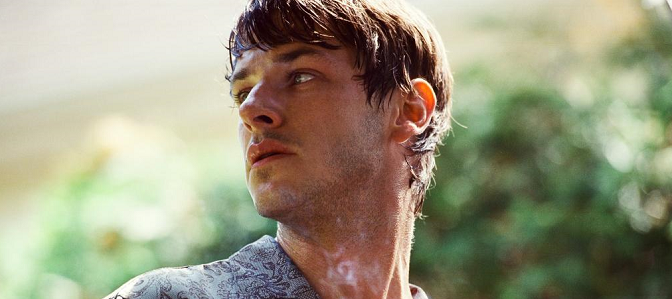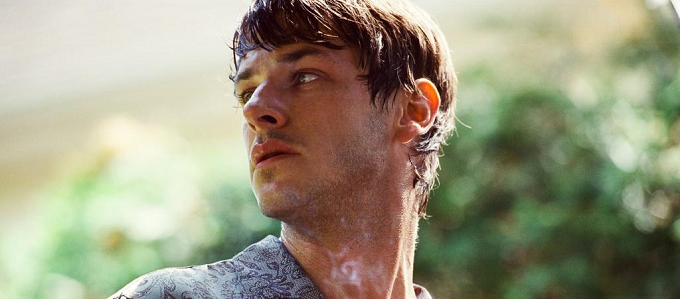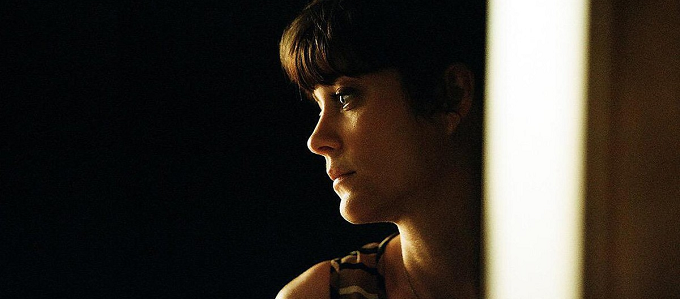“You always want the last word. Think I’ll give it to you?”
Louis (Gaspard Ulliel), a thirty-something writer, is returning to his parental home after an absence of 12 years. His life has, in part, been his work, leaving precious little time to socialise with his family, who he is travelling by plane and then taxi to visit after this prolonged absence. The reminiscing voice-over, quoted above, we hear at the start of Xavier Dolan’s sixth feature film from Louis’s mother, Martine (Nathalie Baye – reprising a maternal role after her casting as the distant mother figure in LAURENCE ANYWAYS) foreshadows the events to follow – Louis has a message to tell his family: he is terminally ill with AIDS. Yet getting this message across whilst mending psychological wounds between a jealous older brother and his nervy wife, Antoine (Vincent Cassell) and Catherine (Marion Cotillard); establishing a relationship with a younger sister he never really knew, Suzanne (Léa Seydoux); and opening up emotionally to a mother to whom he has only corresponded through sparse sentences on the back of the odd postcard these past few years, is going to be a challenge when the family all have their own thoughts to enunciate around the dinner table.
In a similar manner to Dolan’s recent black and white music video to Adele’s song Hello, IT’S ONLY THE END OF THE WORLD is set, according to the on-screen text in the opening shot “somewhere, a while ago already.” This allows for the setting to be as near-past nostalgic as previous Dolan films like MOMMY and TOM AT THE FARM – the characters use mobile phones, and shock-horror, landline phones, whose design we haven’t seen beside people’s ears for a few years. The soundtrack however is reassuringly Dolan-esque – namely an eclectic mixture of contemporary and classic English and French-language tracks, that although anachronistic in a similar way to a Baz Luhrmann feature, sit perfectly over the events unfolding on screen. A relatively new track from Brooklyn-based artist Grimes plays as Louis glimpses inside his former bedroom in the basement of the house, now occupied by his sister Suzanne, but where he spent his formative teenage years. The camera teases us into the room in a slow motion zoom, using the doorway as a frame for the shot (a regular framing motive for Dolan who likes doorways and window frames to help compose the action on screen), as Grimes’ track increases in volume, the zoom and the audio leads us further into Louis’s thoughts – and yes, this is a very introspective feature, perhaps Dolan’s most reflective and sombre to date. The film also comes with an original score by Gabriel Yared, whose swelling strings and solitary plucks of the harp, compliment the tense verbal exchanges between Louis and his family.
Similarities to previous films from Dolan can be found in the lack of a paternal figure, or rather, the focus being on everyone but the father figure. A notable difference this time is that the script is an adaptation of the stage play of the same name, by playwright Jean-Luc Lagarce, who died of AIDS himself aged 34, just four years after the play was first performed. This is Dolan showing that he can work with texts other than his own (although one suspects he’d be just fine writing, directing and acting in his films too), work with actors of much bigger stature on the cinematic world stage than his fantastic reliable regulars (Suzanne Clément and Anne Dorval), and position himself not just as an auteur of Quebecois cinema, but arthouse cinema worldwide (his first English-language film, THE DEATH AND LIFE OF JOHN F. DONOVAN starts principal photography in a month and a bit). One can’t help but wonder if a similarity with work ethic can be found between Dolan and protagonist Louis, and if at some point, this prodigious young director is going to need a break from directing neigh on one film per year, every year, for the benefit of his health and his relationships too?
This is Dolan showing that he can work with texts other than his own (although one suspects he’d be just fine writing, directing and acting in his films too)
Shot in almost extreme close-up by DOP André Turpin, the claustrophobia present in IT’S ONLY THE END OF THE WORLD, is more intense a sensation than for instance, MOMMY (with its novel use of aspect ratio to convey different emotional states of the film’s protagonist). We may be watching the subtleties of Gaspard Ulliel’s acting up-close (there’s something wonderfully tragic and world weary about his face in this film), whilst a seemingly never-ending bickering is going on in the audio mix, panning left and right between Antoine, Catherine and Suzanne. This raises the tension to almost unbearable levels, only broken by the self-reflective trips into Louis’s memories of car drives with his brother or sexual awakenings on his blue floral motive mattress with a Kurt Cobain-esque best friend.
Tonally, Dolan perfectly captures the melancholy sensation of re-visiting a family home when the location is still the same, the cooking is still the same, the smell of the soap in the bathroom is still the same, but the people and oneself have either changed beyond recognition or departed completely. Like a book you start to read, put down, then pick up a year or two later, the state of mind and creativity required to interact with a setting can alter completely over time, regardless of a terminal illness, whose admission to carrying, Louis is so desperate to reveal but unable to. With little of the momentary euphoria that previous Dolan films have contained, IT’S ONLY THE END OF THE WORLD nonetheless marks the start of a new phase of his career as a director of bigger acting talent and larger budgets, whilst perfectly capturing the twilight years of twenty and thirty-something adults, who move further from juvenile thoughts to questions of their own mortality and the necessity of a loving and resilient family unit around them. Sublime.
httpvh://youtu.be/thp8HaR3xNQ




One thought on “It's Only The End Of The World”
Comments are closed.